
Shiv is the divine masculine force, the Shaktimaan. He has no parents and hence his name is ‘Sayambhu’, meaning one who created himself. We often say ‘Satya is Shiv, Shiv is Satya’ or ‘Satyam Shivam Sundaram’; this is to say that Shiv is as pure and beautiful as the truth or the ultimate truth.
We all know one or two things about Shiv. He lives in Kailash with her wife Parvati and their kids. If you want to know about Shiv’s history, you’ll find that other gods did not consider him as brahman in the initial times. This was the time when one could become brahman by understanding the Veds. Basically, one could become brahman through karma. Shiv’s task was to handle the dark aspects of life and society, namely destruction, ghosts etc. He was fit for this task due to his stoic nature. Not everyone has full control over own emotion to perform tasks like destruction. Think about yourself, can you let go the things that are dear to you – your phones, your kids, your body-parts? Anyway, Shiv kept doing his duties and eventually became a prominent figure. You can think it like this- there is a party and after the party, you have to depend on someone to clean up the mess- that was Shiv’s task, to clean up the mess. When the Devatas and Asuras did Samudra-Manthan, everyone took the good things like Amrit, Kalpataru, jewels etc. But when halahal poison came out, everyone was afraid and rejected it. Shiv was summoned. He is stoic but he is stoic about himself not about welfare of others, which makes him dutiful. Which is why he did not hesitate to drink the poison. Because of this nature of self-sacrifice, he is called Baba (father). Just like a father, he protects his children without asking for anything in return. A fatherly masculinity should also be a bit stoic; he should have control over his emotions so that other family members can rely upon him. A whiny man is never respected and this is what today’s men should learn from Shiv. It is a fact that in today’s society, masculinity, stoicism and competitiveness are shamed- but these things are necessary to have a structured humane society. So, it is necessary for men to be stoic and have control over their emotions and keep developing masculinity.
Moving forward, though Shiva became an important figure in the Dev-kul, not everyone accepted his greatness. One such fellow is Daksha. The meaning of Daksha is the one who is efficient. Daksha was a king and he was efficient in performing Yagna. In the culture of Sanatan, yagna has always been important. It is a practise to seek welfare of the humanity because through yagna, humans can summon gods and get solutions to problems. Daksha used to perform big yagnas for mankind and that’s why he had reputation in Dev-kul. Out of his many daughters, one was Sati. Sati was destined to be married to Shiv as per the Devatas but Daksha did not approve Shiv due to Shiv’s outer-appearance. Shiv, being the controller of dark aspects, often stays in cremation grounds, his body is covered in ashes, snakes wind around his body as he meditates on lord Vishnu. Though he possesses so much authority and status, he has no wealth or even a home. However, divine feminine cannot stay away from divine masculine; and Shiv and Sati started their married life without the approval of Daksha. Displeased Daksha later organised a grand yagna, but did not invite Shiv and Sati. Sati came to know about this from Narad Muni and wished to go. Shiv knew about the situation and asked her to not go but Sati, being adamant, visited Daksha’s home alone. Daksha kept saying humiliating words about Shiv and this hurt Sati deeply. She sat down and kept chanting Shiv’s name and attained mahasamadhi and her soul left her body. When Shiv came to knew about Sati’s departure, he became furious and destroyed Daksha’s yagna. Shiv’s furious forms Beervadra and Bhadrakali killed all those who were present there. This again shows that when masculine and feminine force are separated, destruction is inevitable. However, after Shiv’s anger settled, he returned everyone back to life but vowed to not remarry. After that Sati incarnated as Parvati; you have already read about her in previous chapters.
Like Kali, Shiva is also very important in tantra. It’s understandable because he controls the dark aspects of life. There is a book named ‘Raavan Sanhita’. Raavan, was a great sadhak of Shiv and upon being pleased with his sadhana, Shiv taught him tantra practices, chants etc. He also gave Rudrabeena (a musical instrument) to Raavan; whenever Raavan played that, Shiv would give darshan to him. That book talks about these rituals. All shlokas in the book are dedicated to either Shiv or Hanuman (an avatar of Shiv).
Shiv is a bundle of contradiction. At one hand he lives in destitute but on the other hand he is the owner of all. Moreover, he is detached from everything but he is also so attached to Parvati in a physical, emotional and spiritual manner. He is the top yogi but also, he is the greatest sex symbol. This is the true nature of ‘Parambrahma’- who can do, cannot do and do things differently. He smokes weed and drinks sura but also chants mantra. He is stoic but he is responsible for the hardest tasks. Another interesting thing is that, in certain tantric idols of Shiv-Kali, both are portrayed completely nude and though Kali is in a destructive posture, Shiv is shown as lying and in a sexually excited posture (erect penis). The indication of such that, no matter how terrifying the feminine is, the masculine will always find beauty in her. From a human perspective also, the sadhaks or even normal people see Kali as caring and loving mother irrespective of her terrifying form; the shyama-sangeets are proof of that.
The worshippers of Shiva are called Shaiva, but Shiv himself is a Vaishnav. Shiv’s original divine form is Sadashiv who always remains in a sadh-chit-ananda (always in happy/Sannibesh state) but for operational purposes, he has created 11 Rudra forms. These 11 Rudras are 11 out of 33 koti devatas in Sanatan. Also, ‘koti’ does not mean crore, it is just a divine status, Koti means Supreme. ‘Ru’ means cry, ‘Dra’ means run; Rudra is someone who makes others cry and then leaves – this is basically the story of any destruction. When a destruction occurs, we remember it for short period of time and then we move on. 11 Rudras are Kapali, Pingala, Bhim. Birupaksha, Vilohit, Shasta, Ajapad, Ahirbudhanya, Shambhu, Chand, Bhav. Hanuman is considered the 12th avatar of Shiv. Hanuman’s birth is another interesting story, I will tell you in an upcoming chapter. Shiv’s dark form is Mahakaal because like Kali, he is also the controller of time. Shiva is also known as Adiyogi because he is the first entity who attained sadh-chit-ananda through yog. Our Shiv-Kali Oracle cards has 12 forms of Kali and 12 forms of Shiv, that can help you to seek guidance and blessings in daily life.
We worship Shiv in the structure of linga. Linga is not synonymous to genital; it just means symbol (genitals are synonymous to jananendriya/janananga). I told you earlier that Vishwakarma manifested this structure of Shiv in linga format. If you visit a Shiv temple or any Shivlinga, you’ll see a that below there is a base, then there is an extended surface and on top of that, is the reversed tube-like structure. The extended surface in middle, is actually female symbol or yoni (receptive Shakti). The Shivlinga (male symbol) emerging from (or entering in) the yoni indicates that male-female conjunction is necessary for creation. This is also a reason, why Shiva is considered a father figure. As per one interesting theory, Shiv Lingas are ancient nuclear reactors of ancient times. Even today’s nuclear reactors resemble a similar structure like Shiv Linga. The 12 major temples of Shiv are called 12 Jyotirlinga, which m[AP1] eans symbol of light (energy). Is it a coincident that nuclear reactors also emit energy? Usually, there remains a pot above Shivlinga, from which water falls on the linga. This is similar to the cooling process of a nuclear reactor. A high amount of radiation is found in all 12 Jyotirlinga temples in India.



During Shivratri, if one worships Shiv, the god will offer boons to that person. Usually, the person has to fast and then offer just water and bilwapatra to him. Jai Bholenath.
I have kept Shiv as ‘The Emperor’ because of his fatherly attributes and sense of responsibility. He has authority in the society and he can control important situations that others cannot control.
Upright meaning
In tarot, the emperor card is often associated with authority, leadership, and structure. When the card is upright, it generally signifies positive traits such as leadership, stability, and the ability to provide structure and order. The upright Emperor may represent a person who is authoritative, confident, and successful, or it can indicate a need for structure and organization in one’s life.
Reverse meaning
On the other hand, when the emperor card is reversed, it may indicate negative traits such as abuse of power, lack of structure, or a lack of control. The reversed Emperor may represent a person who is overly controlling, abusive, or lacking in leadership qualities. It could also suggest a lack of structure or order in one’s life, or a need to let go of control and allow others to take the lead.
[AP1]https://wordzz.com/every-atomic-nuclear-plant-world-geometrically-resembles-shiv-ling/
https://aerb.gov.in/english/background-natural-radiation
https://resonantnews.com/2019/09/09/why-are-jyotirlinga-temples-positioned-as-per-fibonacci-series/
Lectures of Nrisingha Prasad Bhaduri
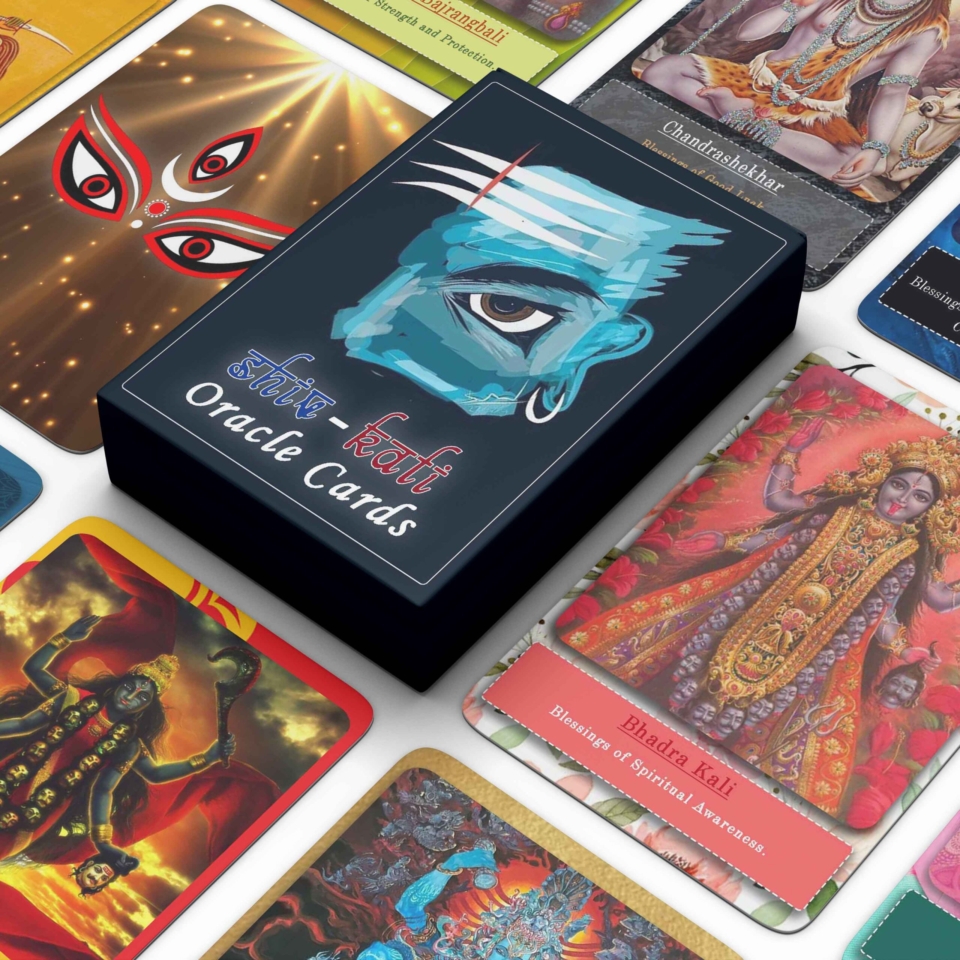

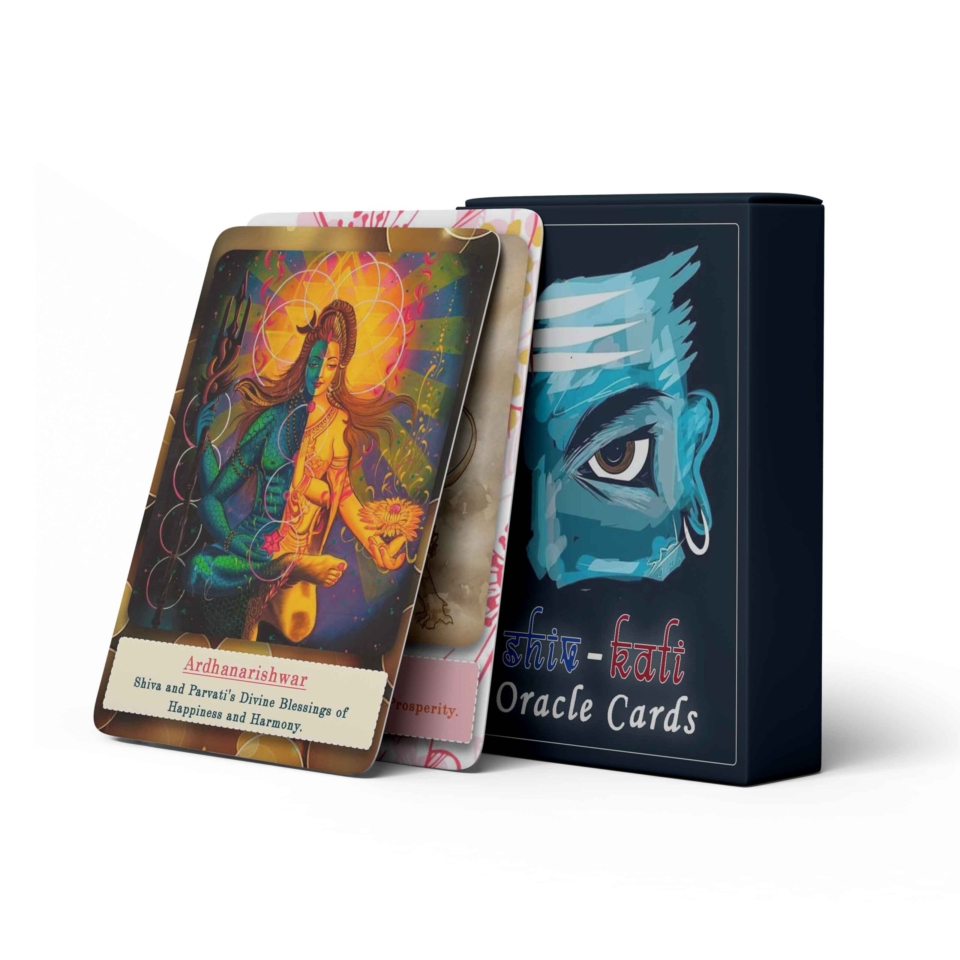
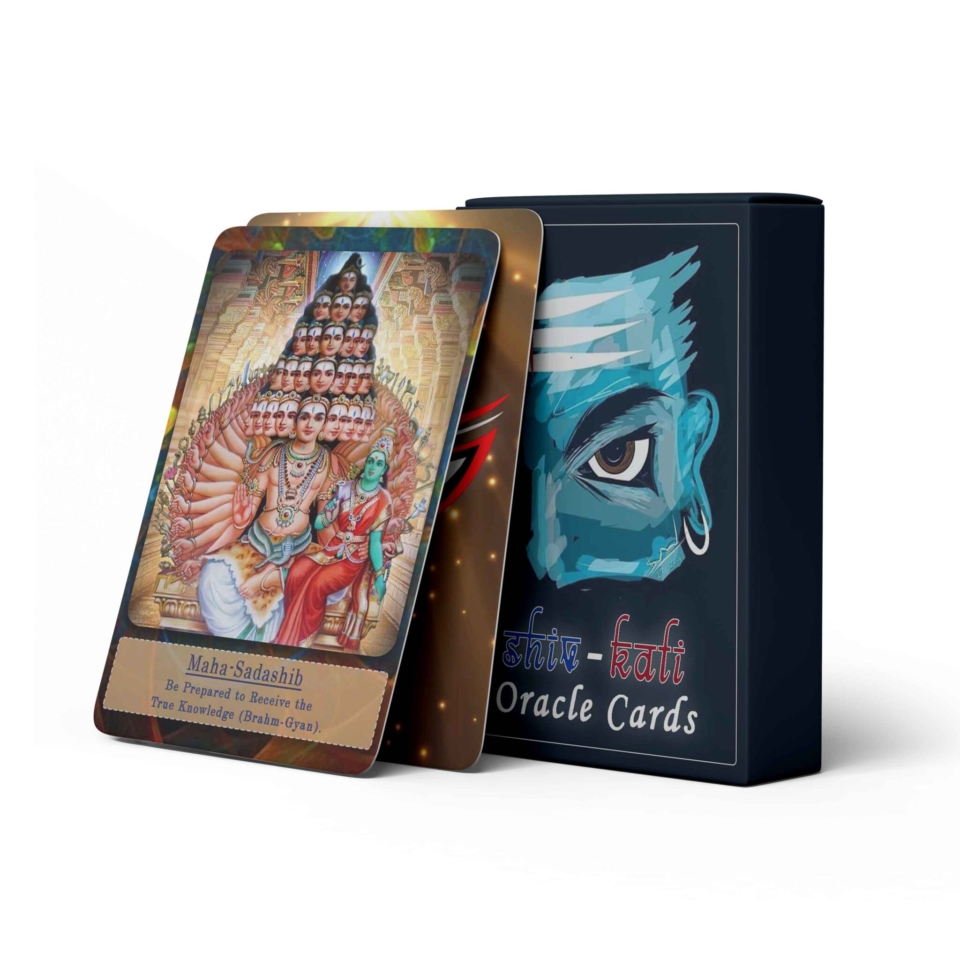
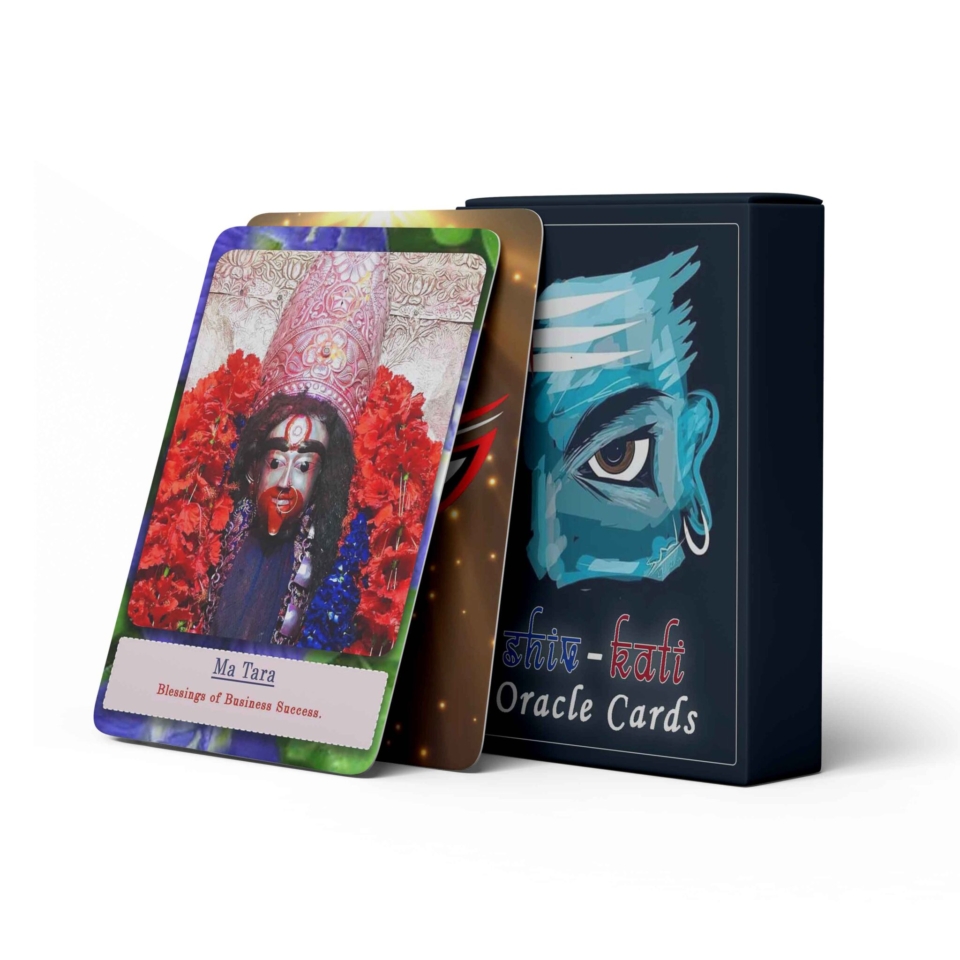

ShivKali Oracle Cards – pack of 24 Cards
- 350 Gsm paper with gloss lamination
- 2 pack designs to choose from
- Free guide materials
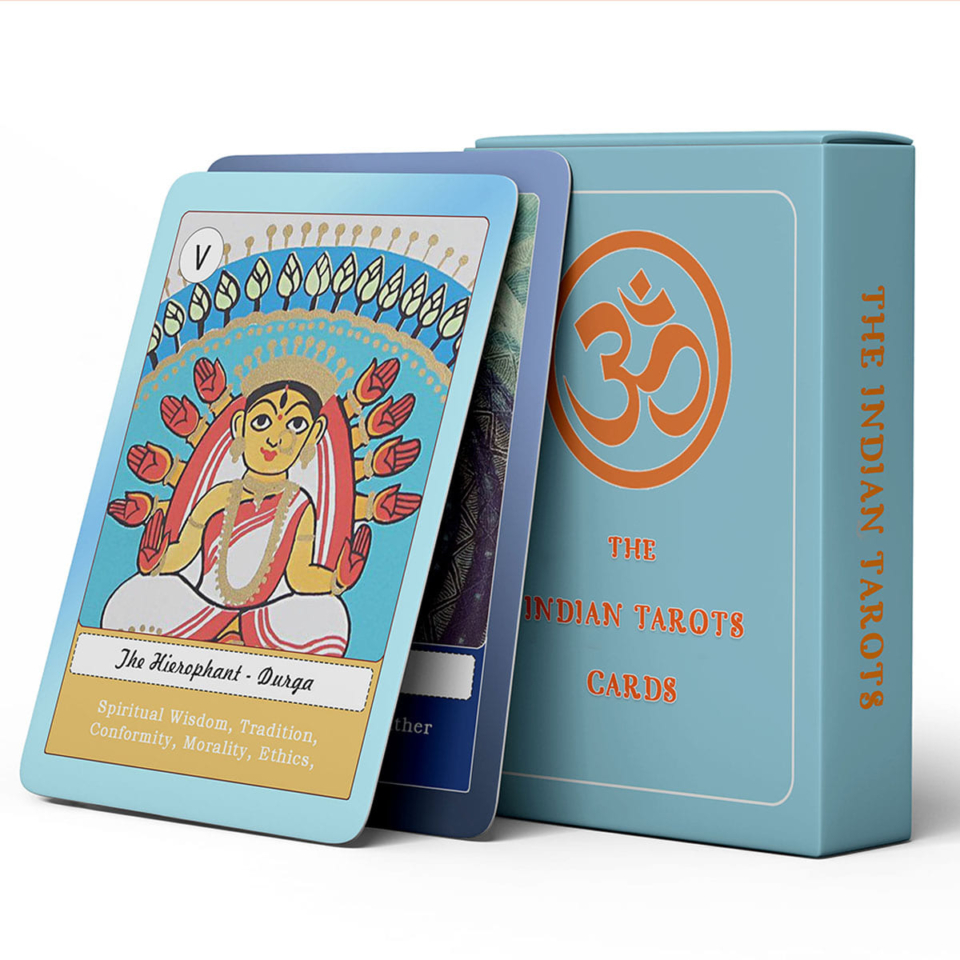

Indian Tarots – Major Arcana – collector’s edition of 22 cards
- 350 Gsm paper with gloss lamination
- Box
- Free guide materials


Add a Comment